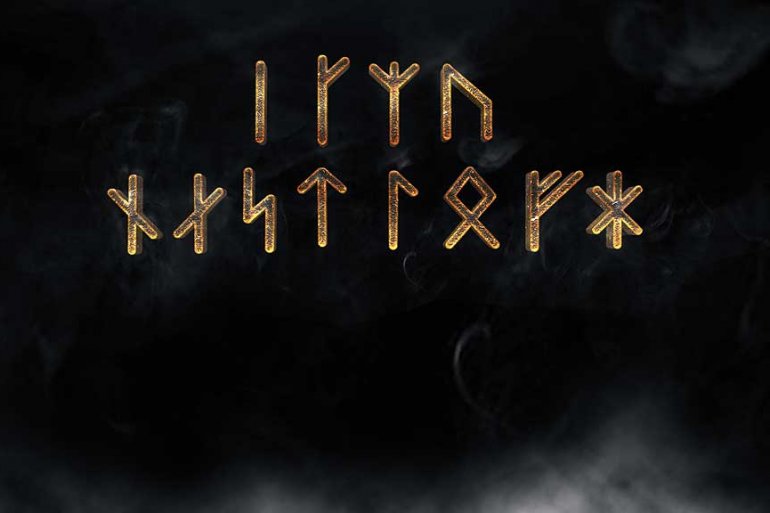November brings a veil of enchantment to the Northern Hemisphere. Ancient traditions and winter lore weave a rich tapestry of myth and celebration, starting with Saint Martin’s Day, or Martlemas, on November 11th. In Dutch, Germanic, and Celtic lands, this day is more than a feast; it is a gateway to the mysterious winter season, filled with both heavenly and fearsome visitors. Saint Martin: The...
The Vǫluspá, one of the most remarkable poems of the Old Norse tradition, stands as a monumental piece of literature within the Poetic Edda. Its narrative recounts the creation of the world, its eventual destruction, and its prophesied rebirth. Within this grand cosmological scope, the Vǫluspá is presented as a prophecy delivered by a vǫlva, a seeress who commands great authority and wisdom. The poem,...
In the annals of Northern Europe during the Renaissance, amidst the flourishing of Hermeticism, Kabbalah, and Medieval magic, emerges an intriguing figure whose life and work spanned the realms of pre-Christian mythology and esoteric Renaissance knowledge. Johannes Thomae Agrivillensis Bureus, known simply as Johannes Bureus (1568-1652), embodies this unique fusion of disparate yet intertwined traditions. Despite the scarcity of information about him, his contributions to the study of Nordic mythology and runology, alongside his engagement with Renaissance esotericism, mark him […]...
Based on the latest archaeological and textual evidence, Children of Ash and Elm tells the story of the Vikings on their own terms: their politics, their cosmology and religion, their material world. Known today for a stereotype of maritime violence, the Vikings exported new ideas, technologies, beliefs, and practices to the lands they discovered and the peoples they encountered, and in the process were themselves...
Who’s Odin? To find Odin’s origins, how far back must we go? Although the most likely explanation for Snorri’s attempts to connect the Æsir with Troy is medieval literary fashion, it is tempting to see a possible source in folk memories of the migration of the Yamnaya culture from the steppes of the Caucasus and Urals into northern Europe four or five thousand years ago....
Hamingja, as used in the sagas, stands for an abstract conception, that of something belonging to an outstanding person which is partly a matter of character and partly of personality, and partly something more than either—that strange quality of ‘luck’ or luck-lessness’ which attaches itself to certain individuals more than others. It is something which can be handed on after death, and it usually remains within one family. It is usually connected with the name, so that if a child […]...
Valkyrie which is composed of two words: the noun valr (referring to the slain on the battlefield) and the verb kjósa (meaning “to choose”). Together, they mean ‘chooser of the slain’. The Old Norse valkyrja is cognate to Old English wælcyrge. A malevolent female demon, a sorceress or a female witch. Among the Anglo-Saxons the valkyries were female spirits of carnage. So the nowadays picture...
Tacitus gives us some fascinating details in Books 7 and 8 of his Germania, written in about 98 CE, relating to the role of German women in war and battle. He points out that a major contribution to German military success lay in the fact that their fighting units were not made up of warriors randomly formed into motly crews. But rather are ‘composed of...
The Druids gathered and important questions were to be answered via divination. The means of determining the future? A human victim who was to be back-stabbed. From the movements of his death throes, the future was revealed to the forest magicians. As it is the practice of modern armies to attempt to destroy the intelligence-gathering capabilities of their enemies, so was it the practice in ancient days. Where magic was the means of intelligence gathering, there the enemy soldier put […]...
The rune row or runic alphabet is not an alphabet comparable to the Greek or Roman alphabets. The rune row begins with another set of letters—f, u, th, a, r, k—and thus the rune row is called the Futhark. The order of the runes in this rune row was found on Gotland. On the Kylver stone, and on other items like the Vadstenabracteate and the...
The story of the Goose Girl starkly shows the process that sets out when any one chooses to neglect or simply reject reality. And as a result chooses not to move into action. The Goose Girl, once an exquisite little princess who held tremendous promise, slowly but surely lost her dignity, her horse, her clothing, and last but certainly not least her personal identity. Your...
From his seat in Asgard, Odin, observed the Norns at the base of Yggdrasil, and envied their skills and their foresight. The god twisted his will toward the undertaking of coming to know the Runes. The native home of the runes is the Well of Urd with the Norns and since the runes do not reveal themselves to any but those who prove themselves worthy of such fearful insights and abilities, Odin hung himself from a branch of Yggdrasil, pierced […]...













